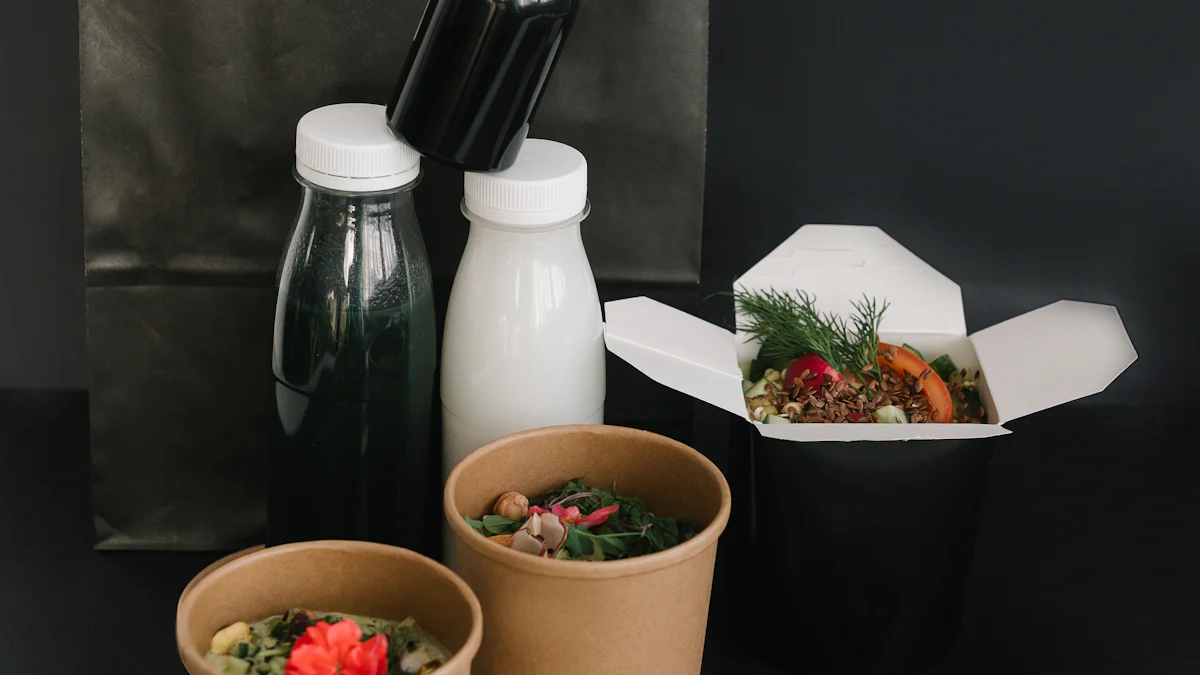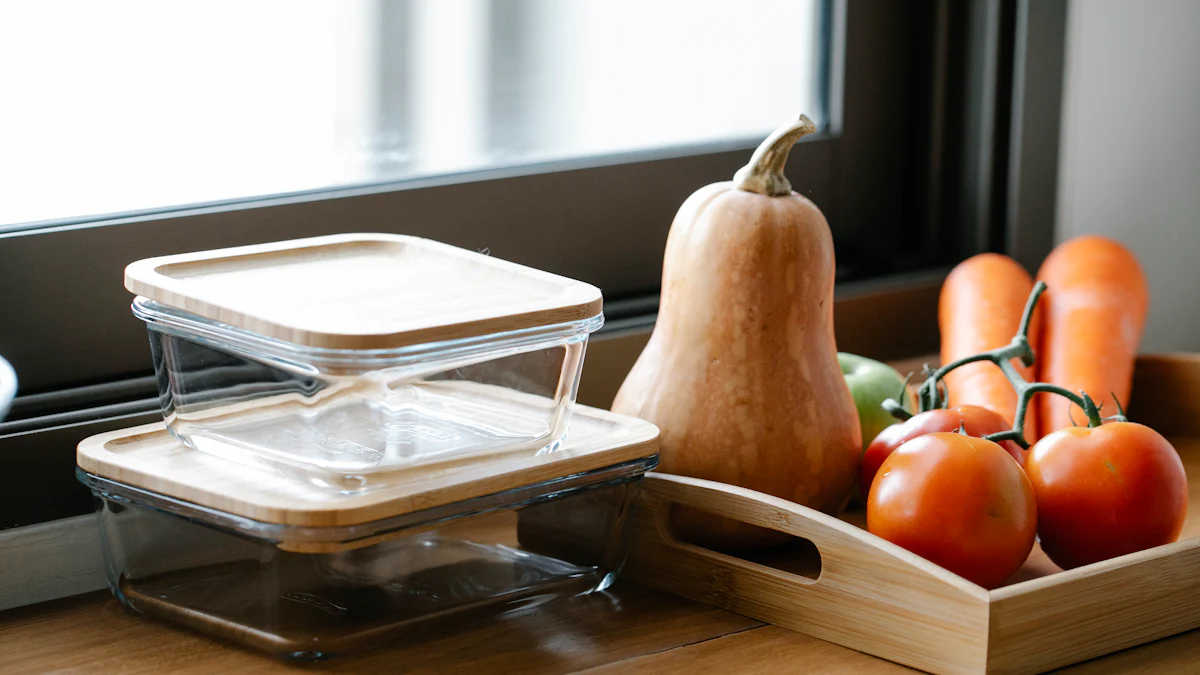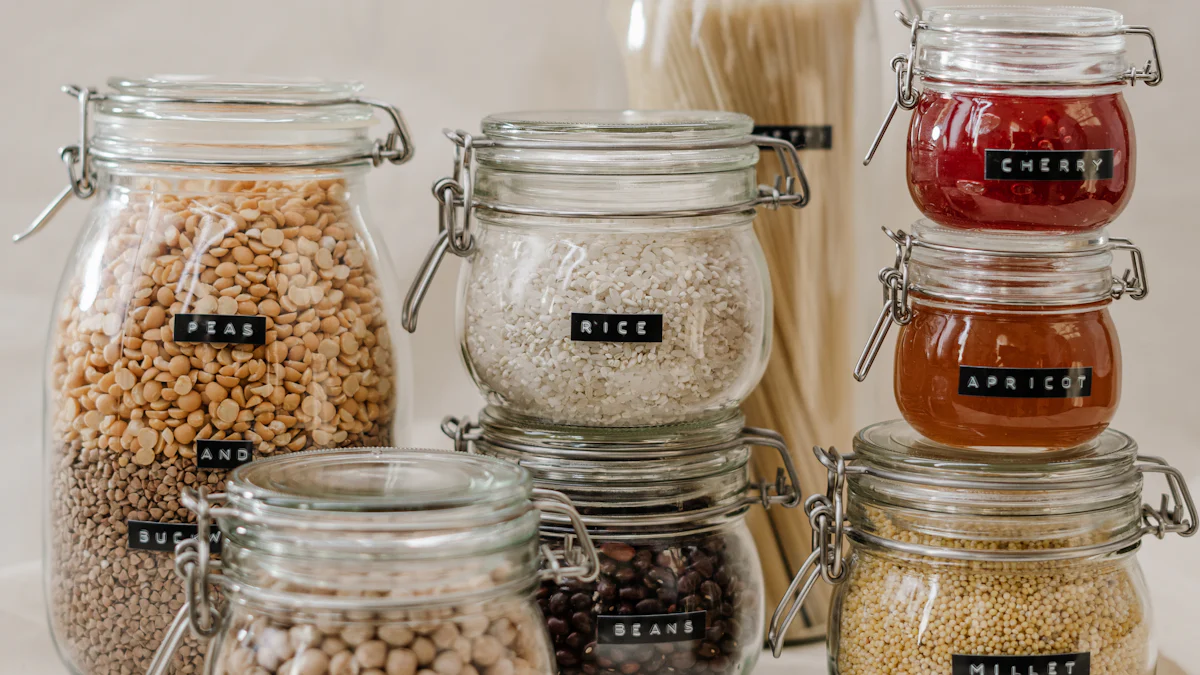
Biodegradable containers are essential in minimizing environmental harm. Unlike conventional plastics, they naturally decompose, aiding in resource conservation and pollution reduction. When purchasing in bulk, I prioritize finding a dependable 5 compartment biodegradable container supplier to ensure high-quality 5 compartment biodegradable containers and efficient delivery logistics.
Key Takeaways
- Always ask for samples and test them before buying in bulk. This helps avoid problems like leaks or breaks.
- Look into suppliers carefully by reviewing their finances, reviews, and certifications. Good suppliers make your business look better.
- Check order details twice and talk clearly with suppliers. This stops confusion and ensures on-time delivery.
Request and Verify Samples

Why Testing Product Quality is Crucial
When I buy biodegradable containers in bulk, I always test product quality first. This step ensures I receive durable and reliable containers that meet my needs. Poor-quality containers can lead to issues like leakage or breakage, which can harm my business reputation. Testing samples also helps me confirm that the materials used are truly biodegradable and environmentally friendly. By verifying quality upfront, I avoid costly mistakes and ensure my customers receive the best products.
Steps to Request Samples from a 5 Compartment Biodegradable Container Supplier
Requesting samples from a 5 compartment biodegradable container supplier is straightforward. First, I contact the supplier and provide details about my requirements, such as the quantity and intended use of the containers. Next, I ask for a few sample units to evaluate their quality. Many suppliers offer free or low-cost samples, especially for bulk orders. Once I receive the samples, I test them under real-world conditions, such as holding hot or cold food, to ensure they perform as expected.
Key Features to Evaluate in Samples (Durability, Material, Design)
When I evaluate samples, I focus on three key features: durability, material, and design. Durability is essential because the containers must withstand handling and transportation without breaking. I also check the material to ensure it is biodegradable and sourced sustainably. For example, containers made from plant starch are renewable and decompose naturally, unlike those made from oil-based materials. Here’s a quick comparison:
| Material Type | Source | Biodegradability | Environmental Impact |
|---|---|---|---|
| Bioplastic | Derived from starch | Yes | Renewable and environmentally friendly |
| Ordinary Materials | Extracted from oil | No | Non-biodegradable, contributes to pollution |
Lastly, I assess the design. A well-designed container should have secure compartments to prevent food mixing and an ergonomic shape for easy handling. These features ensure the containers are practical and appealing to customers.
Supplier Verification
How to Research a 5 Compartment Biodegradable Container Supplier
When I evaluate a 5 compartment biodegradable container supplier, I focus on several key factors to ensure reliability. First, I check their financial stability and production capacity. A financially sound supplier with sufficient capacity can handle bulk orders without delays. I also look into their ethical standards and customer feedback. Hearing directly from other businesses about their experiences helps me gauge the supplier’s dependability.
One of the best ways to gauge a supplier’s reliability is through feedback from their existing customers. Reach out to these businesses to hear about their experiences.
Lastly, I ask about their risk management strategies. I want to know how they handle disruptions like supply shortages or natural disasters. This gives me confidence that my orders will arrive on time, even in challenging situations.
Benefits of Factory Visits or Virtual Tours
Visiting a supplier’s factory, either in person or virtually, provides valuable insights. During these visits, I assess their production capacity and quality control processes. I ask about their performance history, including how they address quality issues. I also request samples to evaluate their products firsthand.
A factory visit allows me to see how well the supplier manages risks, such as delivery reliability. If an in-person visit isn’t possible, I opt for a virtual tour. This still gives me a clear understanding of their operations and helps me build trust with the supplier.
Importance of Checking Certifications and Compliance
Certifications play a crucial role in verifying a supplier’s credibility. I always check for third-party certifications like ASTM standards or SCS Global Services. These certifications confirm that the supplier meets environmental and safety standards. They also enhance the supplier’s reputation, which can benefit my business by appealing to eco-conscious customers.
I also review their compliance with labor and environmental practices. This includes assessing their waste management systems and energy efficiency. Ensuring compliance not only supports sustainability but also guarantees the quality and safety of the products I purchase.
Avoiding Quantity and Packaging Issues

Tips for Double-Checking Order Specifications
When I place bulk orders, I always double-check the specifications to avoid costly mistakes. I start by reviewing the order details, including the size, material, and design of the containers. This ensures the products meet my exact requirements. I also confirm the quantity to avoid shortages or overstocking.
To ensure accuracy, I request a detailed order confirmation from the supplier. This document outlines every aspect of the order, from dimensions to delivery timelines. I compare this with my original request to catch any discrepancies early. If I notice any issues, I immediately communicate with the supplier to resolve them before production begins.
Effective Communication with Suppliers
Clear communication with my supplier is essential for avoiding misunderstandings. I maintain regular contact through emails or calls to stay updated on the order’s progress. When discussing packaging or delivery, I use precise language to eliminate confusion. For example, instead of saying “as soon as possible,” I specify exact dates or deadlines.
I also ask questions to clarify any uncertainties. For instance, I inquire about the packaging process to ensure the containers are protected during transit. Building a strong relationship with my 5 compartment biodegradable container supplier helps me address potential issues quickly and efficiently.
Inspecting Packaging for Damage or Errors
Inspecting packaging is a critical step before accepting bulk orders. I follow best practices to ensure the packaging meets quality standards:
- Material Inspection: I verify that the packaging materials are eco-friendly and durable.
- Design and Prototype Testing: I evaluate prototypes to identify flaws before mass production.
- Production Monitoring: I request updates during production to ensure consistency.
- Finished Product Inspection: I check the final packaging for functionality and appearance.
- Use of Technology: I encourage suppliers to use automated systems for quality control.
Common packaging mistakes can lead to significant problems. For example, flimsy packaging may collapse during shipping, while excessive packaging can frustrate eco-conscious customers. Here’s a quick guide to avoiding common errors:
| Packaging Mistake | Why it’s a packaging mistake | Packaging Best Practice |
|---|---|---|
| Not asking for a packaging review | Incorrect size or compliance issues can arise. | Submit your packaging for a review. |
| Forgetting about function | Weak packaging may fail in transit. | Test for durability before shipping. |
| Overcomplicating packaging | Complex designs frustrate customers. | Keep it simple and user-friendly. |
| Not considering product safety | Unsafe packaging can harm your reputation. | Ensure all safety measures are in place. |
By following these steps, I ensure the containers arrive in perfect condition, ready for use.
Ensuring Reliable Delivery
Selecting the Right Shipping Method for Bulk Orders
Choosing the right shipping method is critical when I order biodegradable containers in bulk. I always consider the size and weight of the shipment. For large orders, freight shipping often proves more cost-effective than standard parcel services. I also evaluate the distance to the delivery location. For international orders, I prefer air freight for speed or sea freight for cost savings.
I ensure the shipping method aligns with my timeline. If I need the containers urgently, I opt for expedited shipping. However, for less time-sensitive orders, I choose standard options to save costs. I also discuss packaging with the supplier to ensure the containers are secure during transit. Proper packaging minimizes the risk of damage, especially for fragile or lightweight items.
Managing Delays and Tracking Orders
Delays can disrupt my business operations, so I take proactive steps to manage them. Common causes of delays include traffic congestion, weather conditions, and increased shipping volumes during peak seasons. To mitigate these risks, I plan my orders well in advance. I also confirm that shipping labels are accurate to avoid unnecessary corrections.
Tracking tools help me monitor shipments in real-time. I rely on GPS for location updates and route optimization. Barcode scanners and RFID technology ensure efficient tracking at checkpoints. These tools provide visibility, allowing me to address potential issues before they escalate. If delays occur, I communicate with the logistics provider to find quick solutions.
Partnering with Trusted Logistics Providers
A reliable logistics provider ensures my bulk orders arrive on time and in good condition. I start by researching their reputation and service quality. I also assess their geographic coverage to confirm they can handle my delivery locations. Cost efficiency is another factor I consider, as it impacts my overall budget.
Technology capability plays a significant role in my decision. Providers with advanced tracking systems and automated processes offer better reliability. I also look for scalability and flexibility, ensuring they can adapt to my growing business needs. By partnering with a trusted provider, I gain peace of mind knowing my shipments are in capable hands.
Verifying quality, supplier reliability, and delivery processes ensures smooth bulk purchases. I always take proactive steps to avoid common pitfalls, like requesting material samples and certifications or discussing sustainable options with suppliers. These strategies help me maintain consistent quality and reliability.
Buying biodegradable containers in bulk offers significant long-term benefits for businesses and the environment:
| Benefit | Description |
|---|---|
| Lower Per-Unit Costs | Bulk purchasing reduces the cost per container, allowing savings to be allocated elsewhere. |
| Long-Term Financial Benefits | Consistent pricing over time protects the budget from market fluctuations. |
| Improved Inventory Management | Maintains a steady supply, avoiding last-minute shortages and saving time. |
| Appeal to Eco-Conscious Customers | Biodegradable options align with sustainability goals and attract environmentally aware consumers. |
Additionally, bulk purchasing supports sustainability:
| Benefit | Explanation |
|---|---|
| Reduce packaging waste | Buying in bulk eliminates the need for single-use packaging, which often ends up in landfills. |
| Less food waste | Bulk purchasing allows consumers to buy only what they need, reducing the likelihood of food spoilage. |
| Lower carbon footprint | Fewer resources are used in the lifecycle of bulk products compared to individually packaged items. |
By following these tips, I ensure cost efficiency, environmental responsibility, and customer satisfaction. Bulk purchasing biodegradable containers is a smart choice for businesses committed to sustainability and long-term success.
Post time: Jan-29-2025




